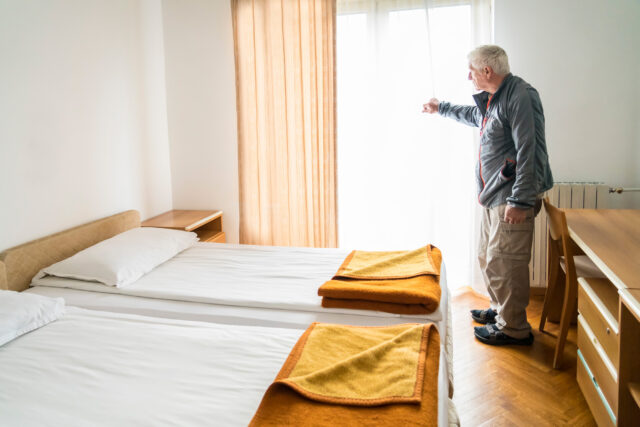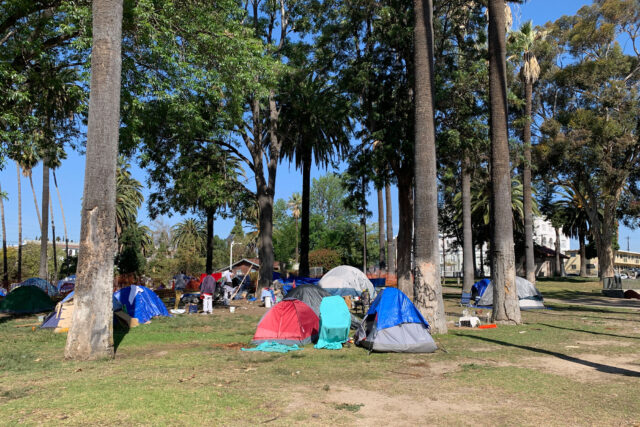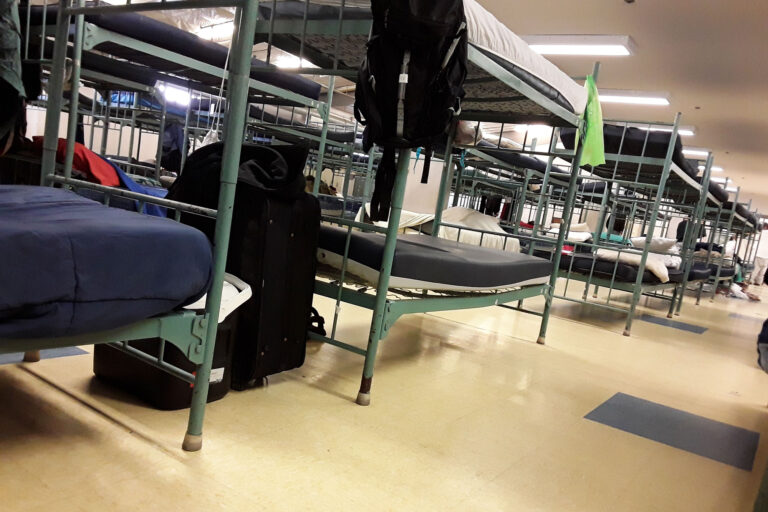The majority of California’s homeless population is unsheltered: 70% of the 161,000-plus people experiencing homelessness as of January 2020 were living in tents, cars, or streets. During the pandemic, the state deployed significant resources to get people experiencing homelessness into shelters. These funds assisted in removing regulatory barriers, securing trailers, and—through Project Roomkey—procuring hotel rooms to provide immediate housing options for those most at risk. Data from the recently released 2021 Annual Homeless Assessment offers a first look at the impact of these efforts.
The report is based on a count of homeless populations carried out by communities across the country on a single night in January. Due to the pandemic, communities were not required to count unsheltered homeless people last year, so the report offers a more limited assessment than usual—it focuses on people in emergency shelters, transitional housing, and safe havens. Fortunately, the full count took place in 2022, and we will have a better sense of COVID’s impact on unsheltered homelessness in different parts of our state by early fall.
The 2021 report shows that sheltered homelessness declined by 8% nationwide between 2020 and 2021, but in California—one of 14 states to report increases—it rose by 7% (from 47,888 to 51,429). This increase was driven by individuals, who make up 64% of California’s sheltered homeless population; the population of homeless families with children in shelters declined 6%.
Chronically homeless Californians—individuals with a disability who have been continuously homeless for one year or more—are a particularly significant concern. The number of chronically homeless individuals in shelters increased by 49% between 2020 and 2021, which could mean that shelters are doing a good job targeting those who have been on the streets the longest.
Without an estimate of the unsheltered population in 2021, we cannot determine whether the increase in sheltered homelessness was driven by unsheltered people moving into shelters or by an increase in the number of homeless people. However, there is reason to believe it is the former. The eviction moratorium and COVID-19 stimulus checks offered much-needed relief to many Californians who would otherwise have become homeless. Moreover, emergency housing programs funded with federal CARES Act money housed tens of thousands of people.
The annual report also provides an inventory of beds for homeless and formerly homeless people. A total of 166,600 beds were dedicated to people who were homeless or formerly homeless in communities across the state. Over the first year of the pandemic, the state’s inventory of emergency shelter beds grew by 18% (almost 7,000 beds), while permanent housing beds for formerly homeless people increased 9%.
This emphasis on emergency shelter beds represented a short-term departure from long-term trends: over the past 11 years, California has almost tripled permanent housing for formerly homeless people, who now occupy 64% of the total inventory of beds; shelter beds have increased by 20% over this period. This reflects a strategy of providing longer-term stability for homeless individuals and families.
In keeping with this longer-term strategy—and building on the success of Project Roomkey, which has helped more than 42,000 people find shelter in California since March 2020—the Newsom administration launched Project Homekey in June 2020. Since then, counties and the state have been working together to purchase and rehabilitate hotels, vacant apartment buildings, and other properties to create permanent housing for people experiencing or at risk of homelessness. In the first round of funding for Project Homekey, more than 8,000 individuals were housed in over 6,000 housing units. Now in its second round, Homekey is set to create up to 14,000 new, long-term housing units.
As California continues to grapple with homelessness—and as more data becomes available—PPIC will track changes in the state’s homeless population and monitor efforts to provide housing solutions.
Topics
coronavirus COVID-19 Health & Safety Net homelessness Housing Poverty & Inequality safety netLearn More

Early Evidence of Shifts in Local Homeless Populations during the Pandemic

How Hospital Discharge Data Can Inform State Homelessness Policy

Most Californians Continue to Identify Homelessness as a Big Problem

Video: How Hospital Discharge Data Can Inform State Homelessness Policy




